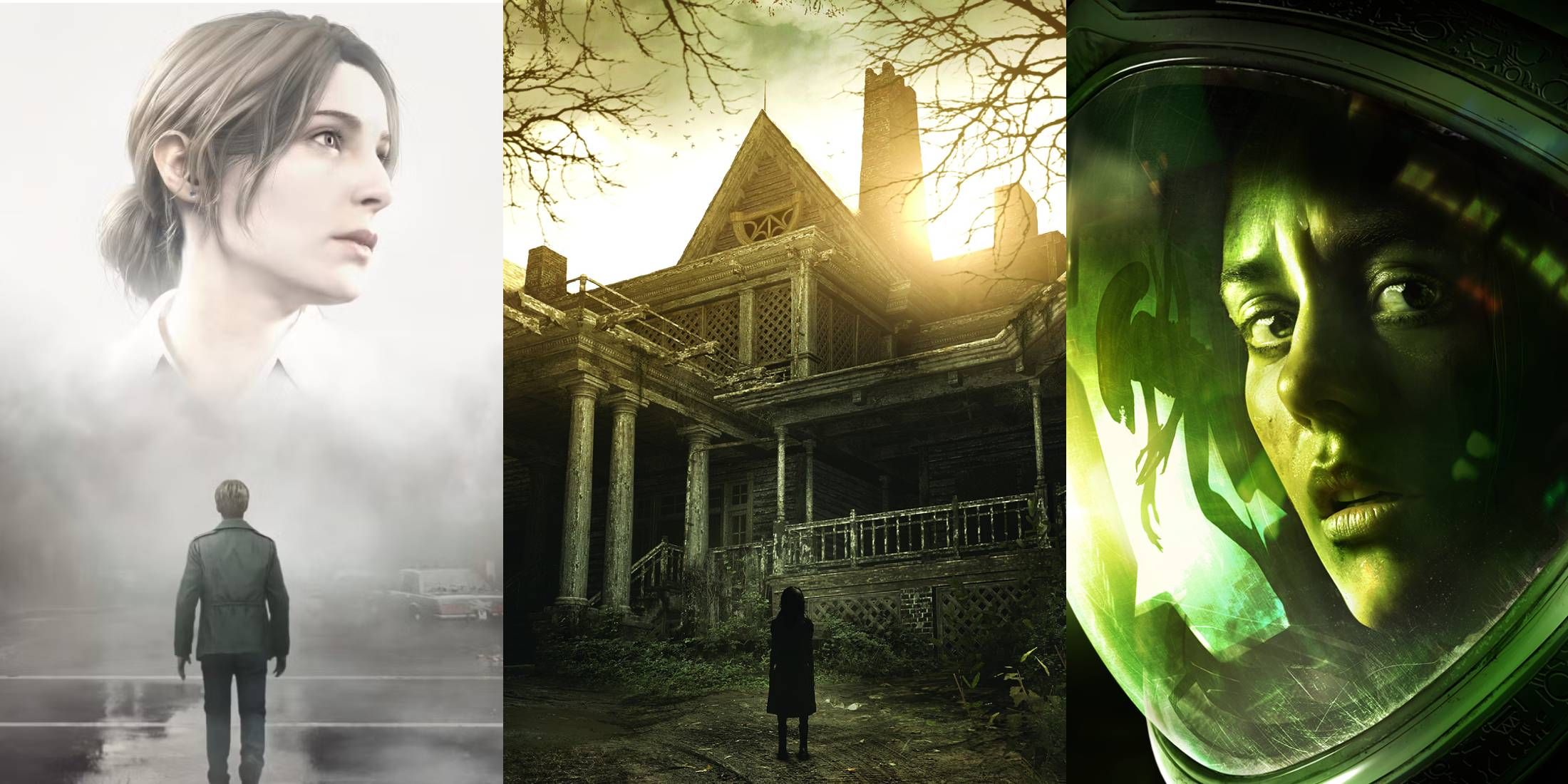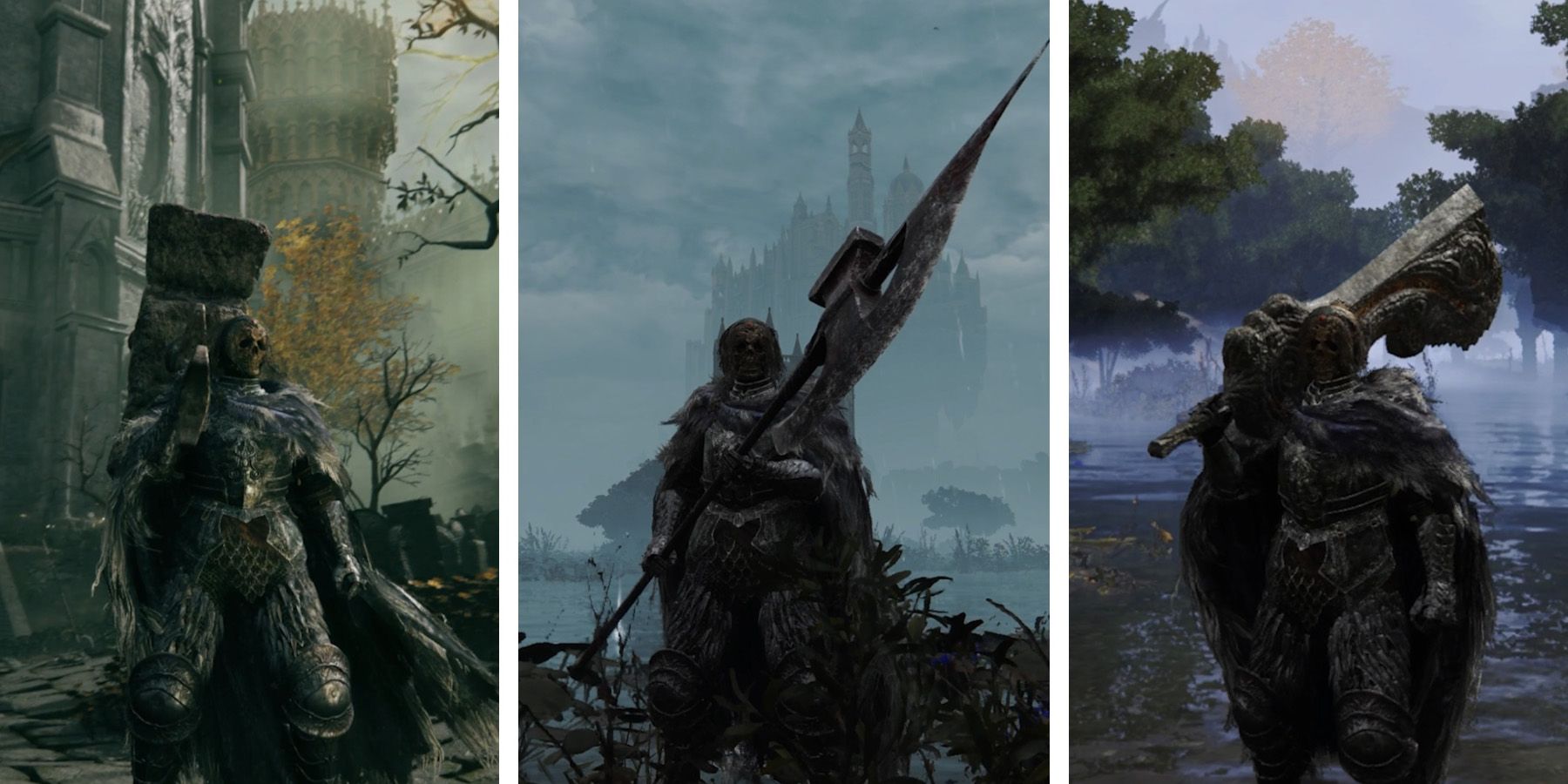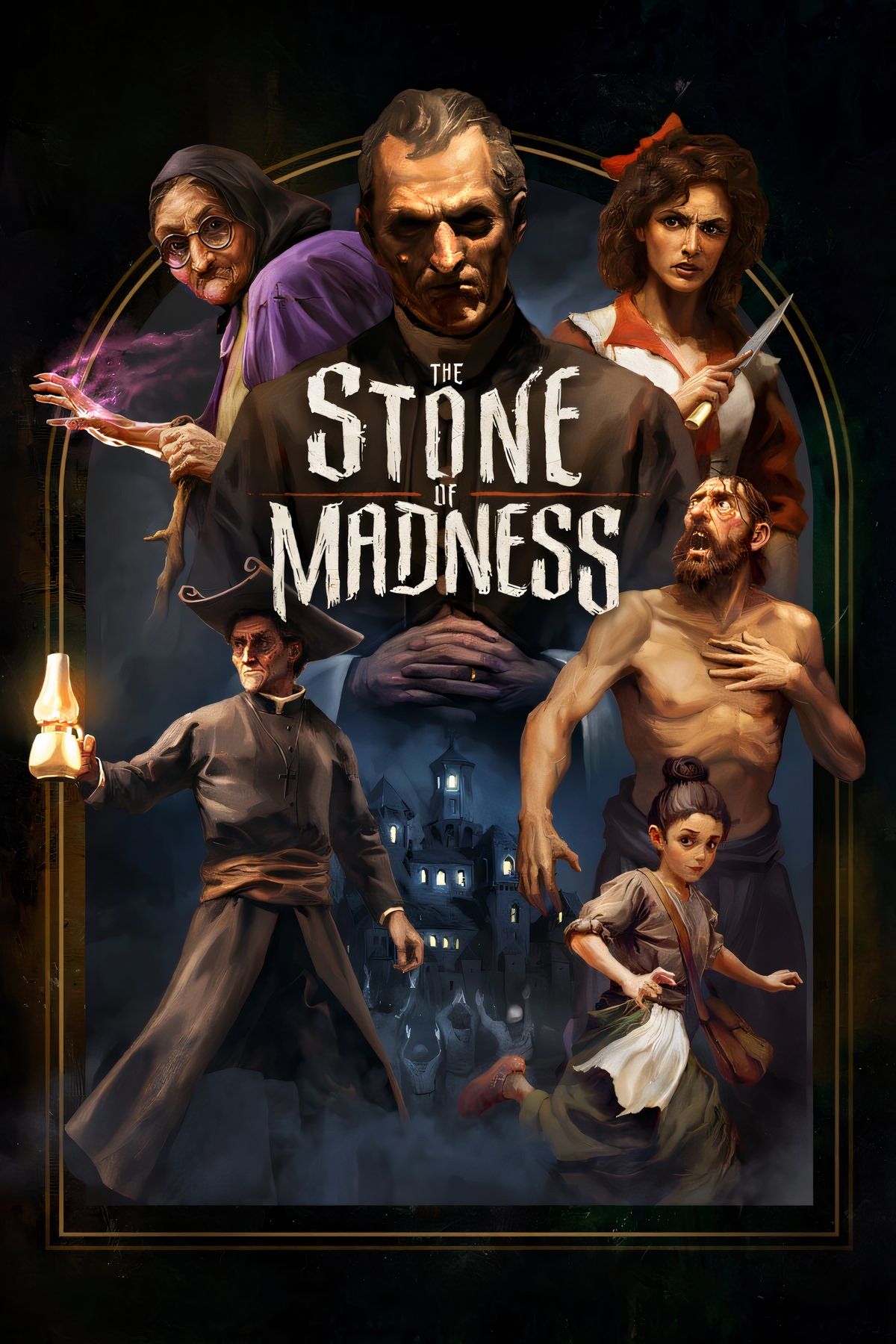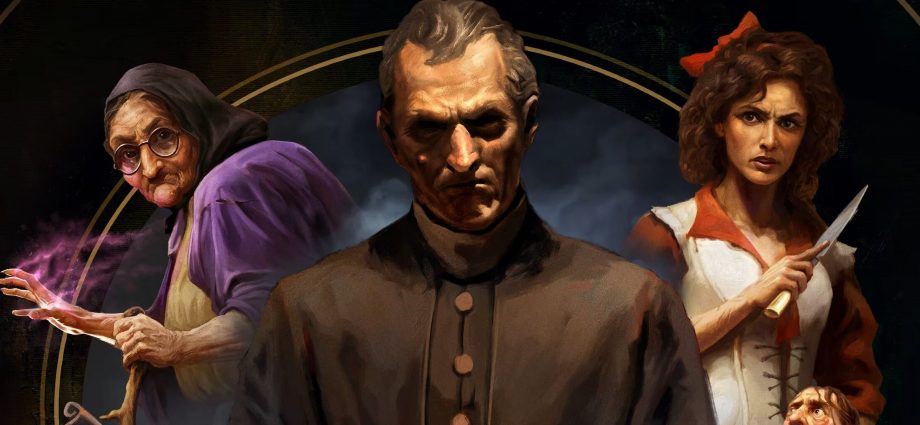The Stone of Madness manages to stand out from the crowd with its incredibly unique art style. Taking cues from many corners of Spanish culture, including historical monasteries and the work of painter Francisco Goya, The Stone of Madness has a lot going on with its aesthetic surface—and even more hiding under the hood.
Game Kitchen’s The Stone of Madness is an isometric strategy stealth game with quite a distinctive style. With hand-painted backgrounds, 2D-animated characters, richly detailed character portraits, and a setting that mixes the religious fears of 18th century Spain with Gothic sensibilities, it’s easy to see how Stone of Madness puts its best foot forward. Game Rant has received an exclusive look at behind-the-scenes art and developer insight, all of which sheds light on how the game’s aesthetic came to be.
6:28

Related
8 Best Horror Games That Rely On Atmosphere
It’s hard to beat the following horror games in the spooky atmosphere department…
Behind-The-Scenes Of The Stone of Madness’ Art Style
As with the look of any videogame, The Stone of Madness‘ art direction is a confluence of various other works. The team took inspiration not only from the real history of religion and corruption in Spain, devising a gothic narrative that avoids the trappings of Victorian London, but from a variety of paintings, films, and novels, many of which have a similar theme to what lies at The Stone of Madness‘ core. In addition, the game uses a variety of techniques to bring its art to life, from hand-painted backgrounds to rotoscoped character animation.
How The Stone of Madness Was Brought To Life
To create The Stone of Madness‘ world, one sequestered within the dark corruption of an 18th-century monastery in the Pyrenees, the team relied on a traditional approach for the animated medium: hand-painted backgrounds with hand-drawn characters. While the team took a great deal of inspiration from Goya, the gorgeously painted backgrounds only partially take from his style. The attention to detail and lighting is certainly reminiscent of Goya, as is the palette, but the team took an extra step with an incredible attention to detail (often taking direct inspiration from real monasteries, such as the Monastery of Yuste, which the team visited during a research trip across Spain). The monastery backgrounds are so rich with detail that the hand-drawn characters, with bolder colours and simpler designs, easily stick out; players can quickly distinguish the setting’s interactable elements.
The characters in Stone of Madness have their own complexities going on under the hood. When represented in gameplay, the characters are animated in hand-drawn 2D—standing out from a painted background in a similar manner to classic hand-drawn animated films. However, due to the time investment required for traditional animation (where every frame of movement is re-drawn, without any sort of consistent rig) and the game’s puzzling isometric perspective, the team decided to save time by opting for rotoscoped animation.
Rotoscoping is a process wherein reference footage is filmed in live action and then drawn over frame-by-frame, saving time by eliminating much of the guesswork found in traditional animation. This technique is incredibly old, used by influential early animators like Winsor McCay, picked up by giants like Walt Disney (particularly when Disney was first transitioning towards feature-length animation), and used extensively by radical pioneers like Ralph Bakshi. In The Game Kitchen’s article on The Stone of Madness‘ art (released exclusively to Game Rant), the team went into further detail on what it was like going for a rotoscoped approach, particularly regarding filming reference footage.
“In our case, we used five cameras mounted on overhead rigs to simultaneously capture every movement from multiple angles. We even used makeshift costumes to match the silhouettes of our characters—wigs, masks, and even a balloon to simulate Agnes’s hunched back! Honestly, it was one of the most enjoyable moments of pre-production.”
4:32

Related
Elden Ring: 30 Best Strength Weapons, Ranked
Strength Weapons deal the heaviest damage of Elden Ring’s arsenal, but some of these hard hitters rise above the rest.
Concept Art and Painterly Inspiration For The Stone of Madness
However, in-game animation isn’t the only way characters are portrayed. The Stone of Madness‘ character portraits pop up from time to time, often demonstrating how much a character might be spiraling into mental anguish. It’s in these portraits that players can see more of Goya’s influence, especially with the visible brush strokes and harsh expressions of characters.
The expressions of The Stone of Madness‘ characters are distinctly evocative of Goya, especially in terms of the shadow-wrought eyes and severity of emotion evident in these portraits. In terms of Goya paintings, the team directly cited Corral de locos (c1794)—known in English as Yard with Lunatics—as a foundational inspiration for the game. This piece is a perfect demonstration of the scrambled emotions found in the painter’s characters. The colours are incredibly dark, and the expressions of the asylum inmates are minimal and often shrouded—yet the smallest details, arranged in irregularity, portray extreme emotions. This is also a running theme in the ‘Black Paintings’ (a series of famously dark Goya paintings) and is reflected in many of the character portraits found in Stone of Madness, especially as characters delve into further depths of instability. Eduardo is a notable example of this, with the development of his own descent being the most reminiscent of the Black Paintings, particularly the famous Saturn Devouring His Son (1820-1823).
When it comes to the concept art revealed to Game Rant, it shows the characters of Stone of Madness in a style even more evocative of Goya, with portraits taking place on void-like, yet nonetheless rendered, backdrops. Given that this art was in concept phase, it makes sense for the characters to better resemble the characters of Goya without their unique in-game identities. Interestingly, this art pushes the fantastical elements of Goya further than Goya himself. However, when it came to the final game, these elements were dialed back and more reserved than the similar elements seen in Goya’s works.

The Stone of Madness
- Released
-
January 28, 2025
- ESRB
-
Mature 17+ // Violence, Blood, Sexual Content, Nudity
- Developer(s)
-
The Game Kitchen
- Engine
-
Unity
- Steam Deck Compatibility
-
Unknown

